Tomatoes
Let's get into some details for hydroponic tomatoes. As usual, we begin with seeds preprocessing as was described above, then we germinate them in a shallow tray with water. By the way, unlike with microgreens, in case of tomatoes and cucumbers you don't want to use napkin: root will attach to it, and then you will have to remove it, before moving seed to the plastic holder.

When the root is long enough (we need it to exceed the height of a foamed polyethilene disk), we place the plant on a plastic faft and let it float in a container with water. Let me repeat: with water. No nutrients.
On the next photo you see a cucumber, don't be surprised: I had no image of a tomatoe.

Then we wait until 2-4 "real" leaves grow and root extends for few extra centimeters. At that point we insert the circle into the holder and the holder - into a hole in a lid of a container.
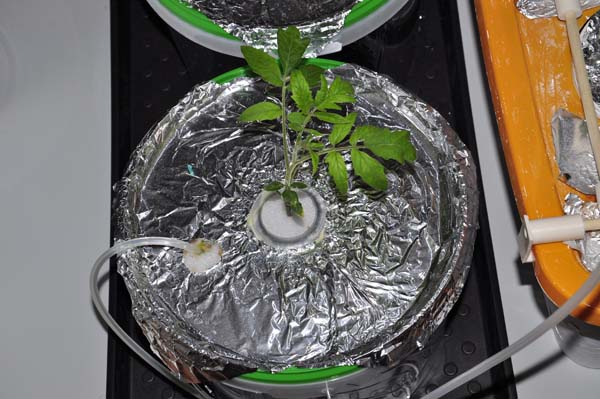
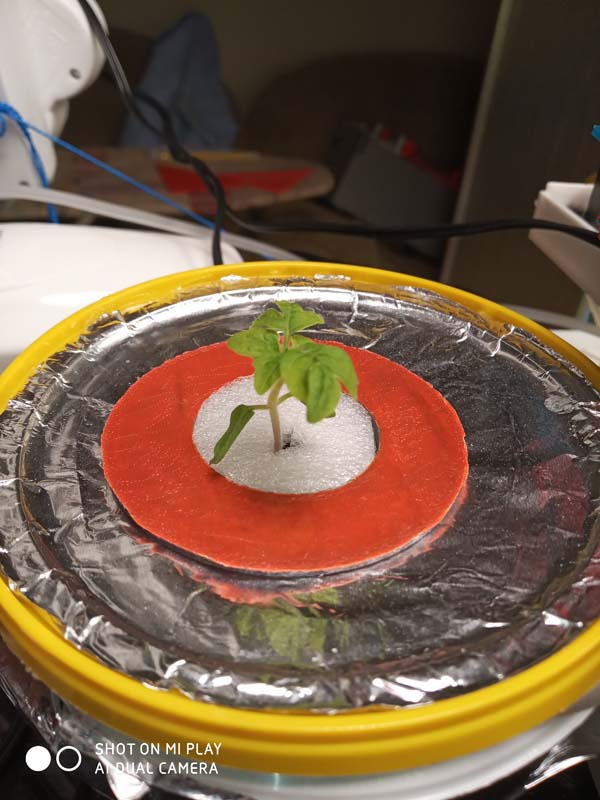
This container should use aeration. Then we wait again. When the plant gets larger (about week later), add about 20% of a target concentration of nutrients (in case you make it from components, as for Flora, they have a convenient table on their bottles).
In another two to four weeks increase the concentration to the level recommended for adult plants.
Ok, our tomato is bigger now, so it is time to move it in the bucket. I suggest using a 10 liters plastic "construction" buckets.
And here we have a problem: upper part of a plant is rather heavy, plus lower part is submerged, and therefore affected by the Archimedes. So our plant falls to the side. The problem is well known :) and a solution is well known as well: we need a support.
As a strong supporter of 3d printing, I would print something cheap and simple, instead of buying something expensive and ugly. So I have printed connectors, added sticks... here we go.

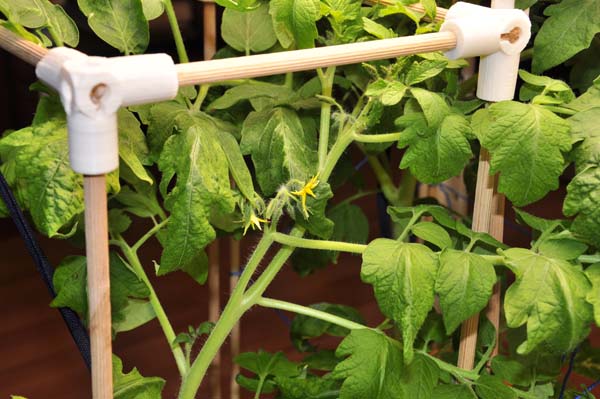

Until now we were not discussing sorts of tomatoes. Many of them will simply not fit our stillage: too tall (below I'll show a possible solution that can be used in an appartment). However, there are short sorts, as short as 20 centimeters. However, price for shortes plant is smaller harvest, so we are going to pick an intermediate ones that have "up to 60 centimeters" on the label.
For a plant that short our support system will work just fine (below I provide a solution for taller ones).
So out tomato growing in all directions, but mostly up. It will fork. And... we will have to do something about it, as if we allow it to grow without control, we'll end up with a green blob with flowers (and ripe tomatoes) inside, so we can not access them. Also the harvest will fall dramatically.
As a common practice, tomatoes are "formed" in "one stem" or sometimes "two stems", cutting off any additional forks.
Often, beginners are not doing it, which is wrong.
By the way, with cucumber, the situation can get even worse: two bushes can interleave and literally kill ("suffocate") each other.

At some point the tomato will begin forming flowers.

At that point we wait, controlling the level of nutricious solution and its concentration (for example, at the label of a Flora series there is a separate column for "florishing").
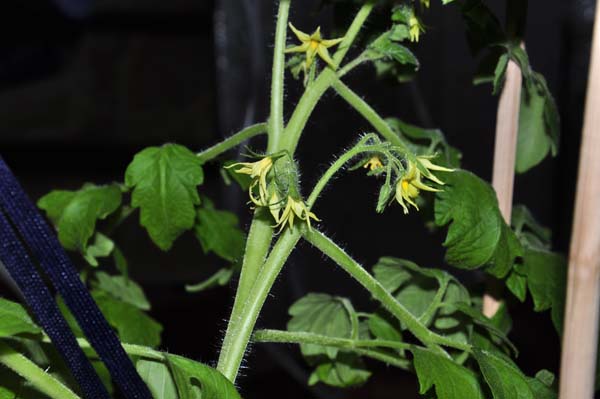
Ok, we have flowers... where is that bee?! Look in the mirror... here it is.
Tomato is a self-pollinating plant and in under the natural conditions it doesn't need our help: wind and occasional insects are enough in order for the pollen from the stamens to fall on the pistils of the same flower.
However there is no wind in an appartment (in hydroponic tutorials they usually suggest using a powerful fan, but in an appartment that might not be enough.
Lucky us, humans and bees are evolutionary close.
Approach one. Shake the plant or hit the support couple of times with something like a wooden stick.
Approach two. Take a soft painting brush and... well... be bee.
Approach 3, the best. Use an electric tooth brush. Turn it on and touch the flowers. The vibration will do the rest.
If you did everything right, you will soon see small tomatoes:
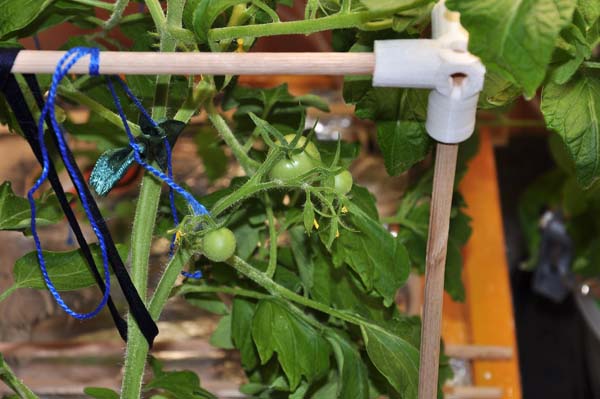
As in the case of pinching extra shoots, you will have to show some cruelty, since ALL the tomatoes that have developed onn your bush will most likely require too much nutrients for the single plant to supply; you must cut off extra flowers. And leaves. And eventually, tomatoes.
There is some kind of a theory explaining how the sugars synthesized in the leaves move throughout the plant. In short, they move down to the roots. Therefore, very often gardeners cut off the leaves, located lower on the trunk than the lowest flowers. This allows more power to be directed to the fruits.

Now you can either wait for a little tomato to become completely red (and possibly fall down), or you can rip those you belive are almost ready, so they turn completely red by themselves. It makes them less tasty, but increases the total yeild.
So let's take a greenish tomato:


... and make pictures every day:


As you can see, it does turn red.